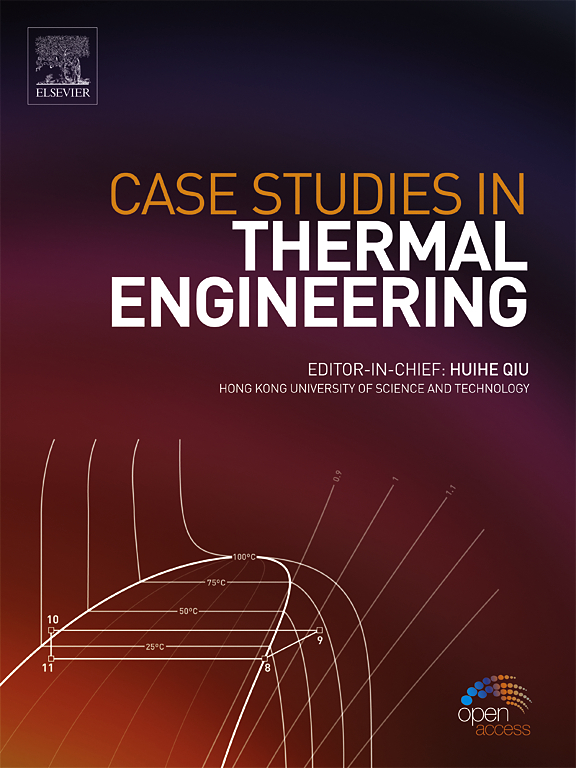应用机器学习:网状芯热管的性能预测
IF 6.4
2区 工程技术
Q1 THERMODYNAMICS
引用次数: 0
摘要
本研究利用机器学习(ML)技术对带有网状芯的热管进行了研究。研究并比较了包括径向基函数插值(RBF)、克里金模型(KRG)和 k 近邻模型(K-NN)在内的模型。使用 k-means 聚类技术对一组训练群体和验证群体进行了分类。设计变量包括热管的几何形状(如直径)、工作流体的性质和使用比例以及蒸发器的温度。预测案例研究包括传热速率(q)以及蒸发器和冷凝器部分的总温差(ΔT)。预测结果表明,ΔT 是最准确的指标,而 q 则是可应用的指标。克里金模型被证明是最准确的,在 90% 的训练数据下,传热速率预测的 RMSE 为 0.9896,R2 为 0.9149;总温差预测的 RMSE 为 0.1902,R2 为 0.9398。RBF 模型的准确度次之,线性、薄板和三次样条线核的准确度也相当不错。本文章由计算机程序翻译,如有差异,请以英文原文为准。
Applied machine learning: Performance prediction of heat pipe with mesh wick
This study presents an investigation of a heat pipe with a mesh wick, utilizing machine learning (ML) techniques. The model including radial basis function interpolation (RBF), Kriging model (KRG), and the k-nearest neighborhood model (K-NN) were studied and compared. A set of training and validating populations were classified using a k-means clustering technique. The design variable included the geometric shape of heat pipe such as its diameter, the properties and percentage used of working fluid, and the temperature at the evaporator. The prediction case study included the heat transfer rate (q), and total difference temperature between evaporator and condenser section (ΔT). The prediction results found that the ΔT gave the most accurate indicator while the q is passable to applied. The Kriging model proved to be the most accurate, achieving an RMSE of 0.9896 and R2 of 0.9149 for heat transfer rate prediction, and an RMSE of 0.1902 and R2 of 0.9398 for total temperature difference prediction with 90 % training data. The second-best accuracy was achieved by the RBF model, with the linear, thin plate, and cubic spline kernels performing reasonably well.
求助全文
通过发布文献求助,成功后即可免费获取论文全文。
去求助
来源期刊

Case Studies in Thermal Engineering
Chemical Engineering-Fluid Flow and Transfer Processes
CiteScore
8.60
自引率
11.80%
发文量
812
审稿时长
76 days
期刊介绍:
Case Studies in Thermal Engineering provides a forum for the rapid publication of short, structured Case Studies in Thermal Engineering and related Short Communications. It provides an essential compendium of case studies for researchers and practitioners in the field of thermal engineering and others who are interested in aspects of thermal engineering cases that could affect other engineering processes. The journal not only publishes new and novel case studies, but also provides a forum for the publication of high quality descriptions of classic thermal engineering problems. The scope of the journal includes case studies of thermal engineering problems in components, devices and systems using existing experimental and numerical techniques in the areas of mechanical, aerospace, chemical, medical, thermal management for electronics, heat exchangers, regeneration, solar thermal energy, thermal storage, building energy conservation, and power generation. Case studies of thermal problems in other areas will also be considered.
 求助内容:
求助内容: 应助结果提醒方式:
应助结果提醒方式:


